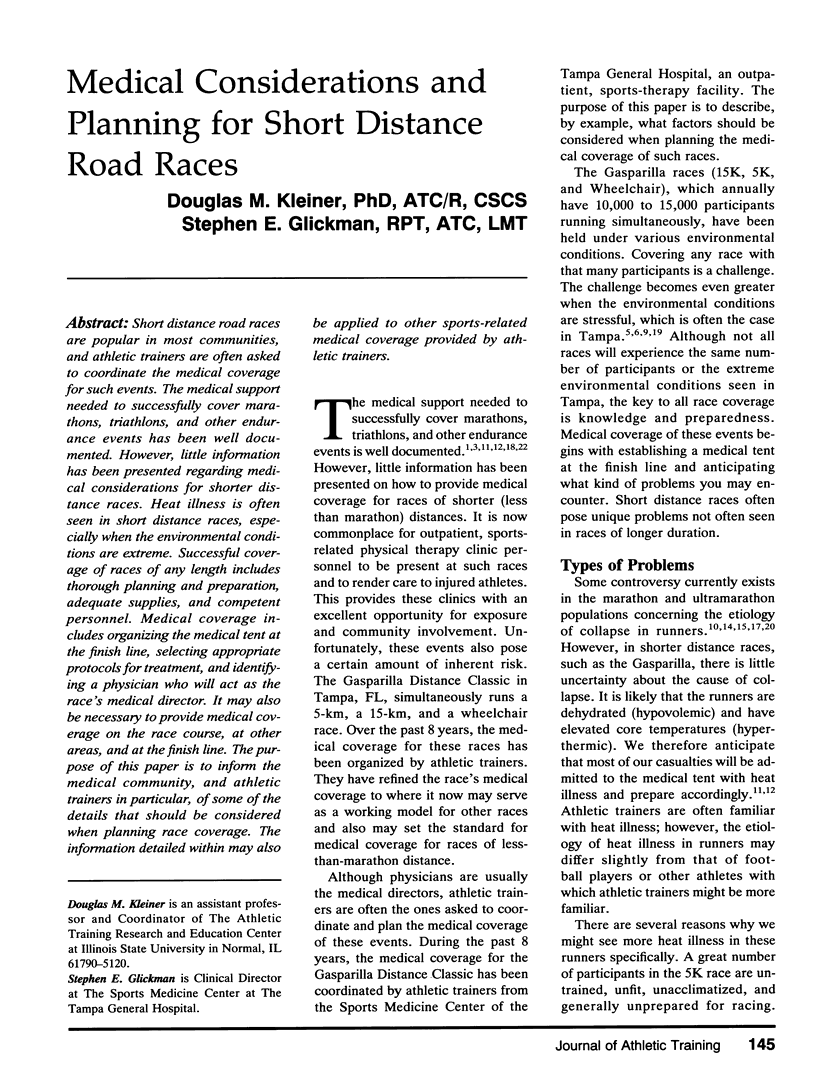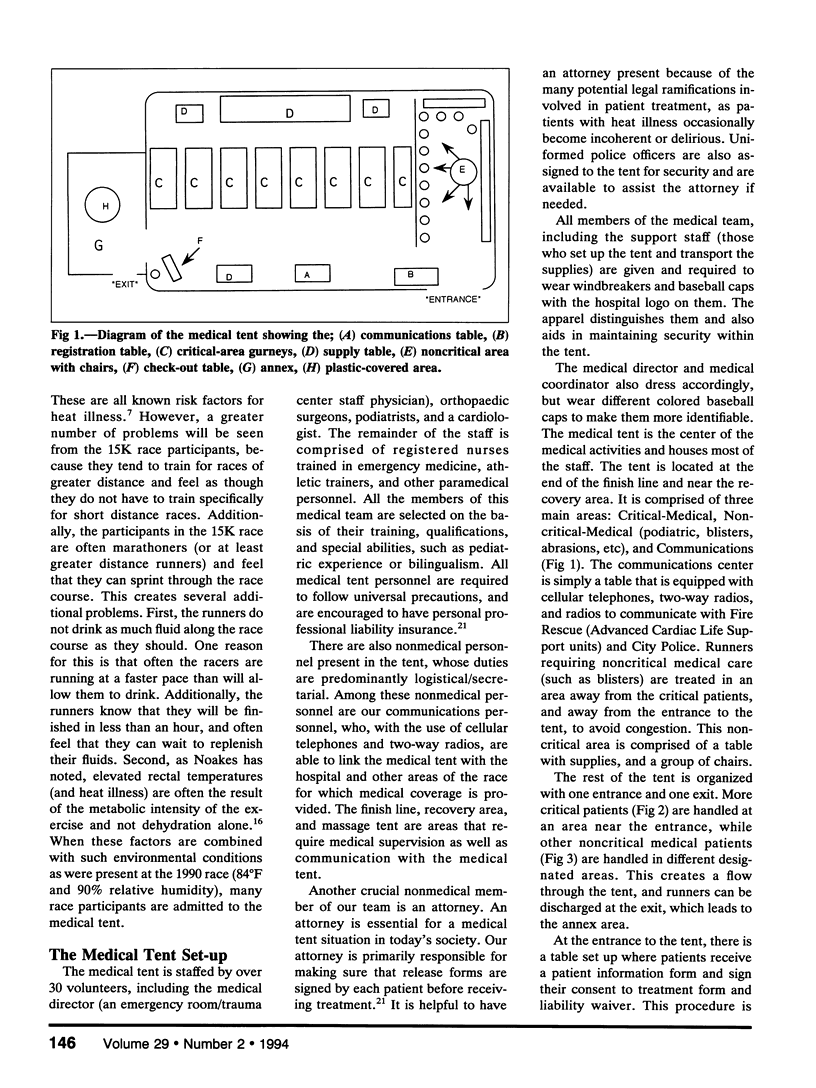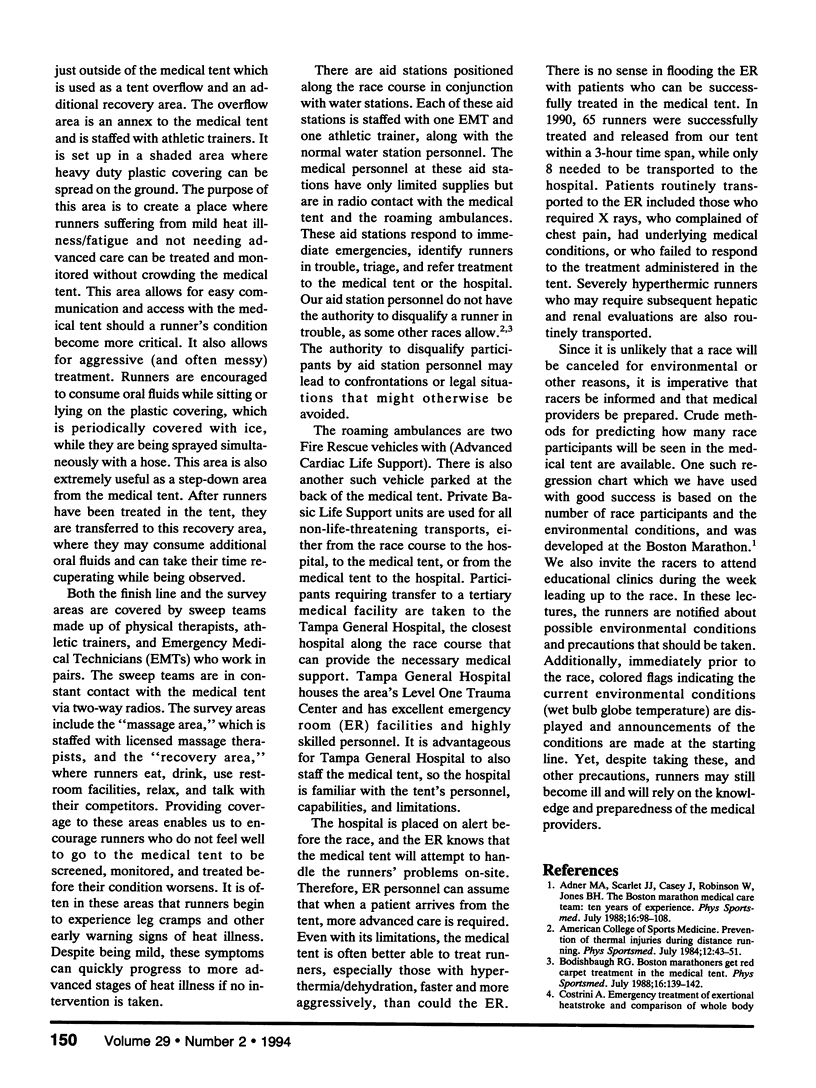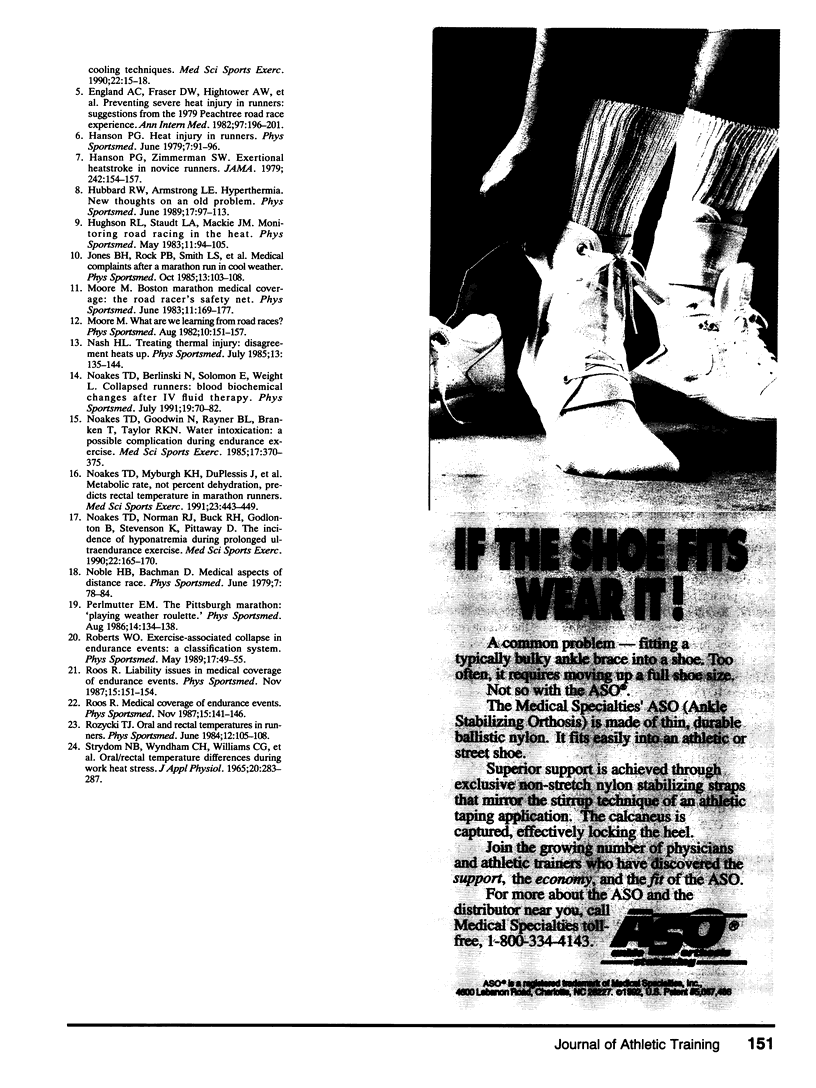Abstract
Short distance road races are popular in most communities, and athletic trainers are often asked to coordinate the medical coverage for such events. The medical support needed to successfully cover marathons, triathlons, and other endurance events has been well documented. However, little information has been presented regarding medical considerations for shorter distance races. Heat illness is often seen in short distance races, especially when the environmental conditions are extreme. Successful coverage of races of any length includes thorough planning and preparation, adequate supplies, and competent personnel. Medical coverage includes organizing the medical tent at the finish line, selecting appropriate protocols for treatment, and identifying a physician who will act as the race's medical director. It may also be necessary to provide medical coverage on the race course, at other areas, and at the finish line. The purpose of this paper is to inform the medical community, and athletic trainers in particular, of some of the details that should be considered when planning race coverage. The information detailed within may also be applied to other sports-related medical coverage provided by athletic trainers.
Full text
PDF




Images in this article
Selected References
These references are in PubMed. This may not be the complete list of references from this article.
- Costrini A. Emergency treatment of exertional heatstroke and comparison of whole body cooling techniques. Med Sci Sports Exerc. 1990 Feb;22(1):15–18. [PubMed] [Google Scholar]
- England A. C., 3rd, Fraser D. W., Hightower A. W., Tirinnanzi R., Greenberg D. J., Powell K. E., Slovis C. M., Varsha R. A. Preventing severe heat injury in runners: suggestions from the 1979 Peachtree Road Race experience. Ann Intern Med. 1982 Aug;97(2):196–201. doi: 10.7326/0003-4819-97-2-196. [DOI] [PubMed] [Google Scholar]
- Hanson P. G., Zimmerman S. W. Exertional heatstroke in novice runners. JAMA. 1979 Jul 13;242(2):154–157. [PubMed] [Google Scholar]
- Noakes T. D., Goodwin N., Rayner B. L., Branken T., Taylor R. K. Water intoxication: a possible complication during endurance exercise. Med Sci Sports Exerc. 1985 Jun;17(3):370–375. [PubMed] [Google Scholar]
- Noakes T. D., Myburgh K. H., du Plessis J., Lang L., Lambert M., van der Riet C., Schall R. Metabolic rate, not percent dehydration, predicts rectal temperature in marathon runners. Med Sci Sports Exerc. 1991 Apr;23(4):443–449. [PubMed] [Google Scholar]
- Noakes T. D., Norman R. J., Buck R. H., Godlonton J., Stevenson K., Pittaway D. The incidence of hyponatremia during prolonged ultraendurance exercise. Med Sci Sports Exerc. 1990 Apr;22(2):165–170. [PubMed] [Google Scholar]




